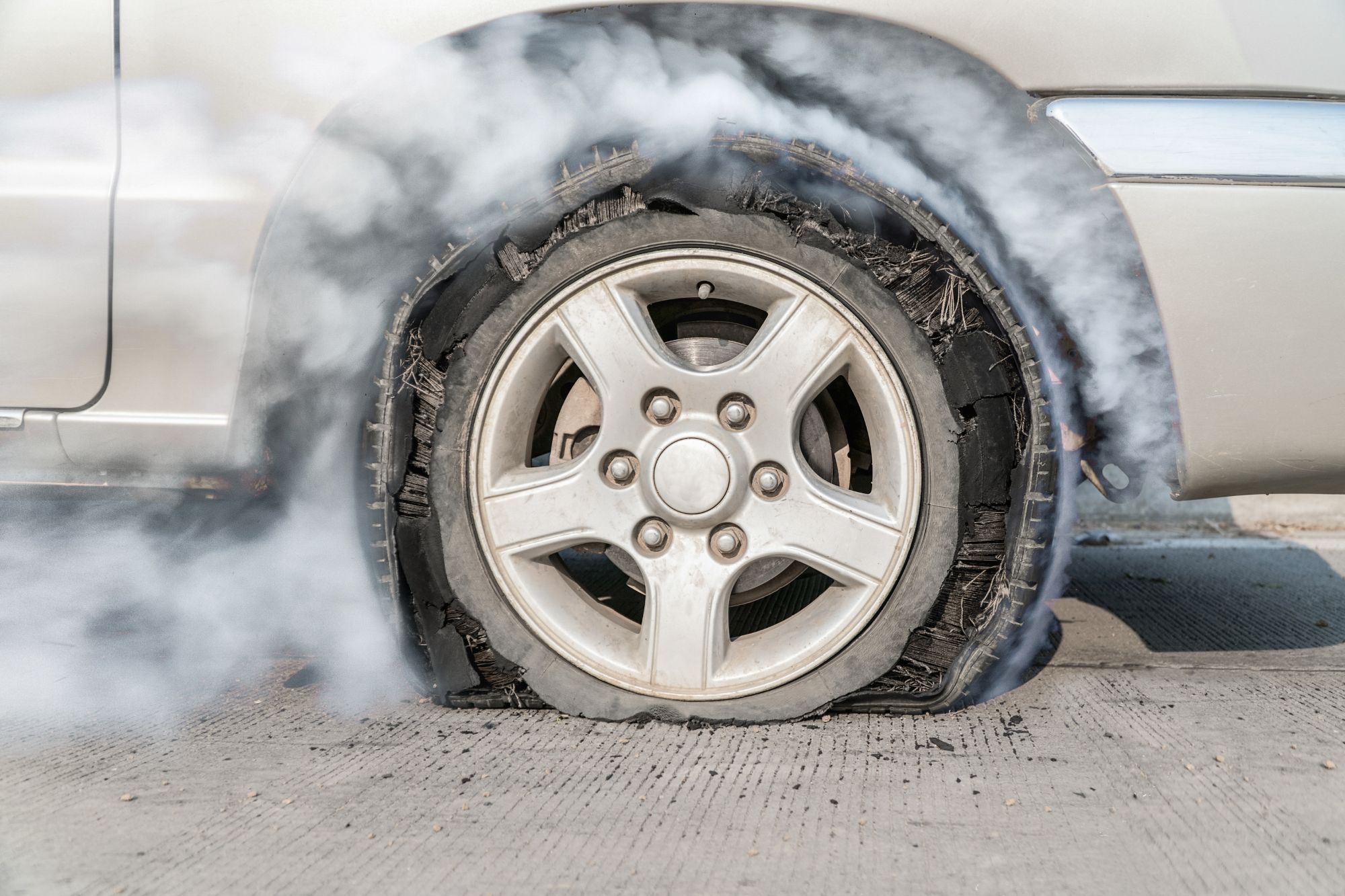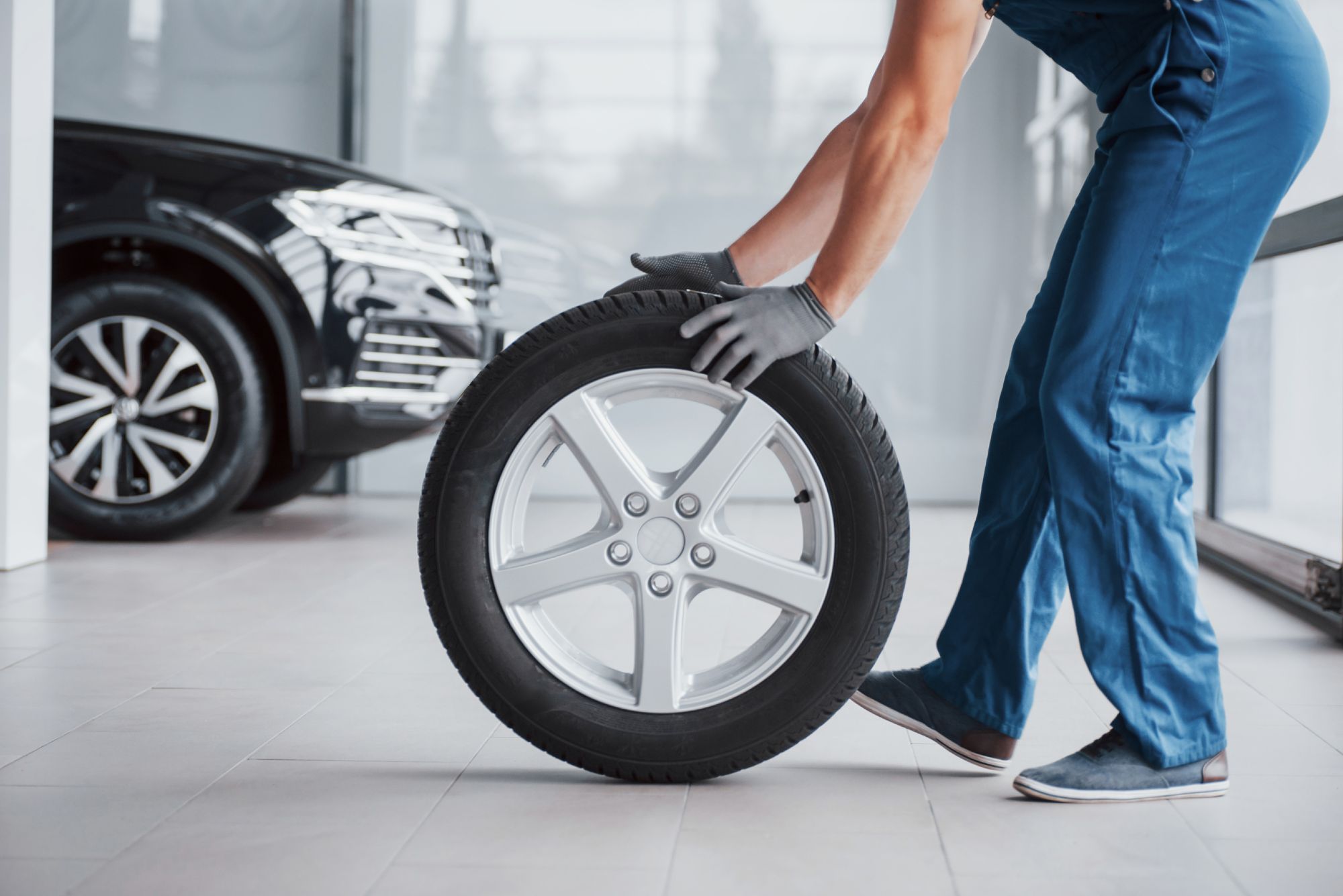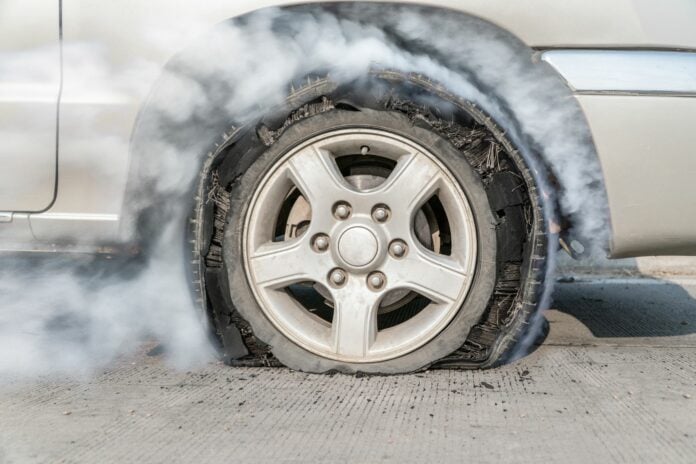Getting a flat tire can really ruin your day. But you know what’s worse than walking out of your house and seeing a flat on your car? Experiencing one while you’re driving. Yes, tire blowouts are few and far between but if it ever happens, the consequences can be dire if you don’t manage to reign in the car.
While your driving school curriculum does cover the topic of changing a flat tire, it doesn’t shed any light whatsoever on the importance of advanced driver training that imparts knowledge on handling dangerous situations such as a tire blowout while driving.

Granted, advanced driver training does extend beyond the basics of operating a vehicle which is what a driving school teaches. However, in the name of safety and better drivers, there should be some fundamentals on the topic taught.
Benjamin Franklin said it best, “By failing to prepare, you are preparing to fail.”
With that in mind, it’s best to always be prepared or at least have a rough of how to maintain control or avoid other vehicles in case of a tire blowout. Though it might be impossible to avoid any contact whatsoever, damage limitation is better than a total loss.
What Causes a Tire Blowout?
Firstly, let’s understand what the factors are behind a tire blowout. The primary reason (75 percent of cases) is underinflating the tire.
- If the tire is underinflated, the sidewalls will bulge out under the weight of the vehicle. At highway speeds; which is when blowouts are likely to happen, the constant bouncing of the sidewalls will create high levels of heat within the rubber. Eventually, this leads to the sidewalls weakening and bursting.
- Another cause of tire blowouts is overloading. An overloaded vehicle exceeds the tire’s weight capacity, causing the sidewalls to fail as friction from the road adds additional heat into the carcass as well.
- Even potholes can cause a tire blowout. If you’re unfortunate enough to hit one at speed, the savage force from the impact can immediately rupture the tire and cause a blowout. If you do manage to spot a pothole ahead, try to maneuver around it or if you can’t, slow down before the point of impact, to reduce the potential for damage.
Read More: Tires: Fastest & Easiest Way to Tell a Quality Used Car from a Lousy One
What Happens during a Tire Blowout?
You’re happily driving on the highway, trying your utmost best to keep under the 110 kph speed limit because you’re a responsible motorist when suddenly you hear a loud pop and within a split second, your car is now sliding sideways on the road.
In most cases, and understandably so, panic sets in and you’ll probably freeze or hit the brakes as hard as possible. Either way, the car will likely spin out of control and impact other vehicles or the siderails before coming to a halt.

What Can You Do during a Tire Blowout?
Now we get to the meat and potatoes of the matter. First things first; and yes we know it’s easier said than done, don’t panic. It can be extremely horrifying to suffer a tire blowout as it comes out of nowhere and suddenly, you’re out of control at high speeds.
Here’s another disclaimer as well; there’s no method of regaining absolute control back. You’re definitely going to lose some control.
However, you can try to regain some level of control by easing off the throttle and quickly taking note of your immediate surroundings. Remember what your instructor taught you at driving school? Always look where you want to go.
If straight ahead appears to be the safest option, keep your eyes planted towards that point and your inputs will automatically try to steer the car in that direction. It’s a reflex and instinct for your hands and feet to try and adjust the steering as well as the pedals to try and steer where the eyes are pointed.
Always be easy with the brakes. Stomping on them as hard as you can will cause a weight-shift in an already out of control vehicle and possibly make the situation worse.
If you’re able to regain control and stop the car without hitting anything, check your surroundings to determine if there’s any oncoming traffic. Unfortunately, if it appears that an oncoming car isn’t able to avoid you, brace for impact.
After coming to a complete stop, try to assess if it’s possible to slowly crawl the car to the emergency lane or at the very least, get out of the way of oncoming vehicles.
Read More: 9 Tips to Drive Safely Through Flooded Roads
What to Do Next? Tips to Drive Safely Through Flooded Roads
Once at the emergency lane, carefully exit the vehicle and try to assess the damage.
Depending on the battering your car took, it might be feasible to slowly crawl to the nearest rest stop or petrol station to fit the spare tire or call a tow truck if your car only comes with a reinflation kit because a blown out tire isn’t going to be fixed with the kit; you’ll need a new one.
Is there the potential of damaging the rim by crawling with a disintegrated tire? Yes, absolutely. But it’s safer to pull over at a brightly lit area than staying on the emergency lane with fast traffic hurtling away right beside you.
Read More: Involved In a Car Accident? Here’s What You Need To Do!

What If the Car Sustained Heavy Damage & Can’t Move?
In this case, hit the hazard lights and exit the vehicle to wait further away from the moving traffic. If your vehicle has an emergency safety triangle, place it on the road at 100 meters or so behind your car to alert oncoming traffic.
The next thing to do would be to call the emergency hotline if you’re on a highway or your insurance provider to send over a tow truck. Do remember not to sit in your car waiting in the event oncoming traffic knocks into it.
What Happens If I’m Stranded Somewhere Remote or with No Phone Signal?
This is an absolute worse-case scenario but again, best to be prepared. If your car is still able to drive, it’s time to perform a wheel change that would give Formula 1 pit crews a run for their money.
If it’s dark, turn on all the lights on your car to allow r other motorists to notice you easier. If there’s someone with you, one can get to the wheel and the other can act as a traffic marshall by waving your phone’s light as a warning to oncoming traffic.
More importantly however, you need to be ready to jump out of the way of any vehicle that might be headed right for your vehicle if they fail to notice the warnings.
Once you’re done, get out of there as quickly as possible and to somewhere well lit or away from the road to better assess the damage to the vehicle and what to do next.
Read More: Upsizing Your Car’s Tires: Is Bigger Always Better?
Conclusion
It’s near impossible to always be prepared for such a tire blowout but one of the best methods to do so would be attending an advanced driver training course. The instructors will be able to teach you the best methods and precisely what your hands, feet and eyes should be working on in the event it happens on the road.
In fact, an advanced defensive driving course isn’t just good to learn what to do during a tire blowout, it’ll make you a better and safer driver overall. Granted, they aren’t cheap but can you really put a price on safety?
If you’re looking for a safe, reliable car, check out CARSOME today or download our app from the Google Play Store or Apple App Store!
